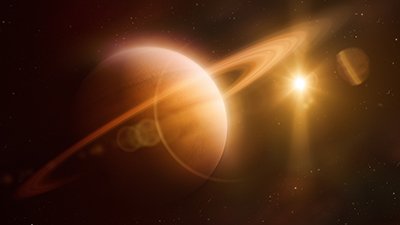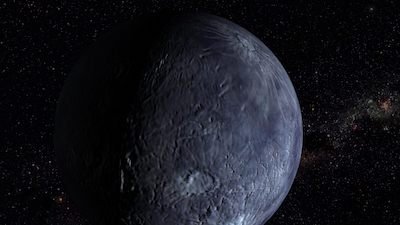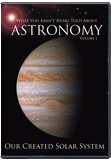
Nibiru
What Is Nibiru?
From time to time we get enquiries about Planet X, often called Nibiru. This rogue planet supposedly passes through the inner solar system once every few thousand years. People have claimed that each time Nibiru does this, it causes great calamity on the earth and on other planets. Some people have linked these past catastrophes to biblical events, such as the Flood. It is very tempting for many Christians to link predicted return visits of Nibiru to the inner solar system with end-time prophecies, such as Wormwood in Revelation 8:10–11.
Before getting too excited about all this, we ought to ask a few questions. What is Nibiru? Is it real? Is it something that we ought to be worried about? Interest in Nibiru has peaked several times, most recently in 2012, so there probably will be a resurgence once again. Indeed, there is a book out now claiming that Nibiru will pass close to earth in October this year (2017). At least one website now is calling for Nibiru’s return next year, 2018. The origin of the belief in this hypothetical planet is a bit murky, but we can trace it.
Zecharia Sitchin
The word Nibiru comes from the ancient Akkadian language, meaning crossing, such as in fording a river. It also has the connotation of a transition point. It was with this meaning that Nibiru came to be used in Babylonian astronomy to refer to an equinox. But it can have other meanings, such as a reference to the constellation Libra, which was the location of the autumnal equinox in the first millennium BC. Nibiru also can refer to locations in the sky in conjunction with certain stars or planets. Nibiru is associated with the Babylonian god Marduk, which in turn is identified with the planet Jupiter.
Nibiru would have remained obscure in the modern world, if not for Zecharia Sitchin (1920–2010), a Russian-born American author. In his 1976 book, The 12th Planet (followed by six more volumes in his Earth Chronicles series), Sitchin claimed that thousands of years ago extraterrestrials from the planet Nibiru established the Sumerian civilization. His hypothesized planet Nibiru has a very elongated orbit with a period of 3,600 years. Nibiru spends most of the time far from the sun, well beyond the orbit of Neptune, but it enters the inner solar system once each orbital period. Collisions with some of Nibiru’s satellites and other catastrophes on earlier passes through the inner solar system created the earth, moon, the asteroid belt, and comets. Sitchen claimed that the history he revealed came from writings from Sumer and other ancient Mesopotamian civilizations; however, archaeologists and others who study the ancient Near East universally dismiss this. It is easy to identify elements of Immanuel Velikovsky’s catastrophism and Erich von Däniken’s alien astronaut thesis in Sitchen’s work.
Nancy Lieder
The next step of development in the story of this hypothetical rogue planet came in 1995. Nancy Lieder, founder of the website zetatalk.com, claims to have received messages from extraterrestrials from the Zeta (ζ) Reticuli system, a visual double star 39 light years away and consisting of two stars like the sun. In 1995, Lieder announced that the Zetas, as she calls these extraterrestrials, warned her that in 2003 a large planet would pass very close to the earth, with devastating consequences that would destroy civilization. Of course, that date came and went without incident. Lieder later explained that this date was “a white lie. . . . to fool the establishment.”1 She says that this Planet X, as she calls it, is still coming, but she is unwilling to reveal the true date of its approach. Lieder says that the government is aware of the truth of all this but that the government covers this up.
Lieder’s choice for the name of her hypothetical planet is unfortunate, because more than a century ago, the astronomer Percival Lowell had chosen “Planet X” as the name of a possible planet lying beyond the orbit of Neptune. The search for this Planet X resulted in the discovery of Pluto. In the minds of many people, Planet X is equated with Pluto, so Lieder’s choice has led to confusion.
While Lieder never called her Planet X Nibiru, she announced on her website in 1996 that “Planet X and the 12th planet are one and the same.”2 Given the widespread knowledge of Sitchen’s thesis, the title of his first book, and his choice of Niburu for the name of his hypothetical planet, Leider clearly intended to equate her Planet X with Sitchen’s Nibiru. However, Sitchen strongly disagreed with this equation. For one thing, Sitchen dated the last pass of Nibiru into the inner solar system in 556 BC; with an orbital period of 3,600 years, Nibiru would not be due until about AD 3000. However, with Lieder’s connection between her Planet X and Sitchen’s Nibiru, many other people began to equate the two. Therefore, many people now use the terms Nibiru and Planet X interchangeably.
The End of the World in 2012
A few years ago, Nibiru came to be associated with the predicted end of the world on December 21, 2012, supposedly indicated in the Mayan calendar. The kernel of this idea was the cycle of 5,126 years in the Mayan calendar. The Mayans believed that this world was created when the last cycle began. Mayan scholars generally think that the previous cycle began on August 11, 3114 BC. If this date is correct, then that cycle ended on December 21, 2012. By the mid-1970s, some New Agers had noticed the idea, and taught that the world would end on this date. Scholars of the Mayan civilization universally dismissed this notion, arguing that no Mayan writings or traditions taught such a thing. Consequently, the Mayans would have accepted the start of a new cycle without much incident. But this did not matter to the true believers.
Other odd ideas soon were tacked onto this nonsense. December 21 was the winter solstice that year. Due to an effect called precession of the equinoxes, the location of the equinoxes and the solstices slide along the ecliptic (the plane of the earth’s orbit) in a 25,800-year cycle. The winter solstice happened to cross the galactic plane in 2012. Some New Agers reasoned that this would place the winter solstice closest to the galactic center that year, so the alignment of the sun, winter solstice, and the galactic center on the same date that the Mayan calendar predicted the end of the world was apocalyptic, and hence no coincidence. From all of this, it was not too difficult to throw Nibiru into the mix, with the suggestion that the rare alignment would lead to Nibiru’s pass into the inner solar system once more, causing an end to civilization. Clearly, none of this happened.
Supposed Photographs of Nibiru
Lieder has made numerous claims over the years that Nibiru has entered the solar system and now can be glimpsed. Often it is on the other side of the sun, and difficult, but not impossible, to see. Any object orbiting the sun on a very elongated orbit would spend very little time in the inner solar system, so if Nibiru had entered the inner solar system, it would have departed that region within a year. Lieder never explains what keeps the planet parked in that position for several years.
Lieder says that astronomers who have bothered to look at her predicted positions for Nibiru have found it. The zetatalk.com and other websites claim that Nibiru has been photographed many times. Most of these photos are fuzzy. Many of the supposed Nibiru images are lens flares. Other Nibiru images are sundogs and other interactions of bright sunlight with thin clouds. Other photographs are so blurry that it is impossible to tell what they are. Anyone with any competence in taking photographs must know what many of these poor images are, so these photos are produced either by rank amateurs who have no idea what they are doing, or they are taken by charlatans who know exactly what they are doing.
Of course, there are many reports that NASA and other government and scientific agencies have taken photographs of Nibiru, but the powers that be are hiding this from the public. Some of the supposed leaked photographs of Nibiru are astronomical objects that are intentionally misidentified. One of the most common examples of this is V838 Monocerotis. In 2002, V838 Monocerotis underwent a still-not-understood eruption. Within months, Hubble Space Telescope photographs revealed a light echo, light reflected off nearby gas clouds. Nibiru fans have claimed that some of these photos are of Nibiru.
Conclusion
While interest in Nibiru has waned since the end of 2012,3 it likely will be rekindled once again. There is no factual basis for belief in this mythical planet. Instead, it was entirely dreamed up in the fanciful realm inspired by alien astronauts, the catastrophism of Velikovsky, and the New Age movement. Christians ought to avoid these things. Therefore, attempts to reinterpret Nibiru in terms of biblical prophecy are doomed to failure.
Footnotes
- Nancy Lieder, “Pole Shift in 2003 Date,” ZetaTalk, http://www.zetatalk.com/index/psdate.htm.
- Nancy Lieder, “ZetaTalk Swirling Moons,” ZetaTalk, 2001, http://www.zetatalk.com/science/s123.htm.
- The end of the year, not the end of the world.
Recommended Resources

Answers in Genesis is an apologetics ministry, dedicated to helping Christians defend their faith and proclaim the good news of Jesus Christ.
- Customer Service 800.778.3390
- Available Monday–Friday | 9 AM–5 PM ET
- © 2026 Answers in Genesis





